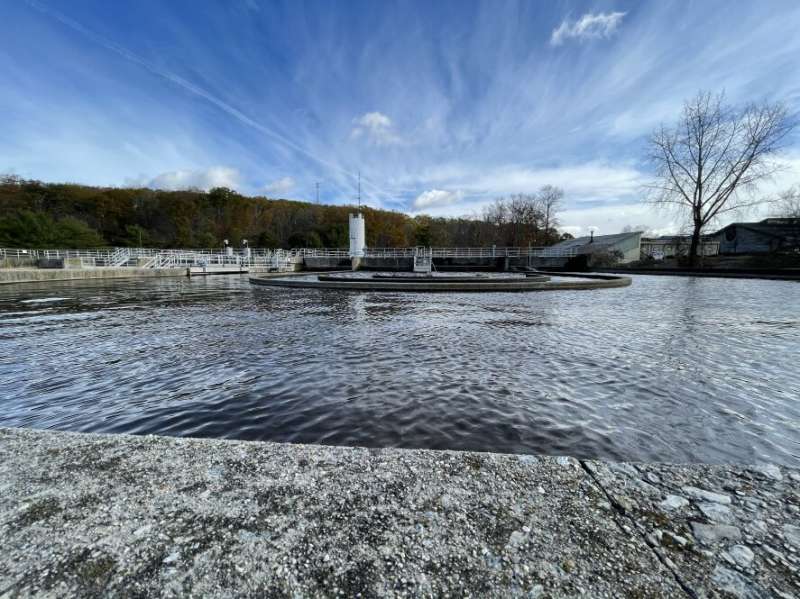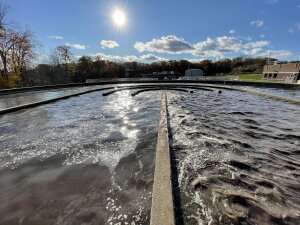How filter-feeding bivalves could be used to clean up microplastics

On a hot summer day in Connecticut, it's common to go to a beach-side restaurant, eat some fresh oysters and mussels, and enjoy the crashing of the waves against the sand. For a group of University of Connecticut faculty and a Florida Atlantic University professor, their plan is to skip the beach and the restaurant and use relatives of those delicious animals for another reason—filtering the harmful microplastics that end up back in our environment.
"Suspension-feeding bivalves, such as oysters, clams, and zebra mussels are very efficient at filtering water and capturing on their gills (the 'filter') particles as small as four micrometers in size [less than 1000th of an inch]. Their 'filter' is self-cleaning and they often filter water for 12 or more hours per day. They are nature's perfect filtering machine," Marine Sciences Professor J. Evan Ward says.
Over the next four years, the group—including Associate Dean Leslie Shor, Chemical and Biomolecular Engineering Professor Kelly Burke, Molecular and Cell Biology Professor Daniel Gage, Civil and Environmental Engineering Professor Baikun Li, and Ward—will use a $2 million grant from the National Science Foundation's Emerging Frontiers in Research and Innovation (EFRI) program to study the use of mussels (part of the bivalve family), combined with microplastic-degrading bacteria, in the filtration of microplastics from the discharge that flows back into our surface water from wastewater treatment plants.
Other faculty members involved in the project include CEE Professor Christine Kirchhoff, CBE Professor Matthew Stuber, CBE Professor Jeff McCutcheon, Marine Sciences Professor George McManus, and Florida Atlantic University Biology Professor Tracy Mincer.
Microplastics, an umbrella term for particles of many different shapes, sizes (<5 mm), and polymer types, are commonly found in the environment through the shedding of synthetic fibers that wash off clothes in the laundry and tiny plastic fragments that are produced in the environment by different processes.
"Most wastewater treatment plants rely on old technology–over 100 years-old–and in some cases use basic approaches like sand filtration that have been known since ancient times," Li says. "In fact, most wastewater treatment plants around the nation are themselves over 50-years old. When these facilities were designed and built, plastics simply did not exist in the variety or quantity that they do today."

Kirchhoff explains that even if the technical hurdles are overcome, there still may be a problem.
"Retrofitting existing infrastructure is an expensive proposition, and there are also many regulatory obstacles standing in the way. Better understanding the non-science obstacles to implementing innovative technology is a key aspect of our research project."
Because of the limitations of wastewater treatment, and also because larger plastics break down in the environment, microplastics end up all over our environment, and many types are tough to break down. The concern is that microplastics could cause harm to animals, plant life, and eventually humans.
According to Mincer, it has been shown that plastic particles less than 150 micrometers can make their way into our lymphatic systems, causing systemic exposure and, perhaps, affecting human health.
"Microplastics can also act as sponges, gathering up other harmful things in the environment. Many studies have shown that concentrations of other common contaminants such as harmful chemicals, pathogenic bacteria, and even viruses can be much higher in microplastics than they are in the surrounding water. Consuming microplastics is therefore a way to be exposed to other harmful contaminants," Mincer says.
In the end, the group hopes learning from nature and working with stakeholders on the barriers to adopting new technology will lead to a sustainable way to better treat wastewater.
"If the project is successful, not only will we develop innovative microplastic wastewater treatment technology, but we will also quantify drivers and barriers to adoption of this new technology with the ultimate goal of increasing its uptake," Kirchhoff says.
Provided by University of Connecticut




















